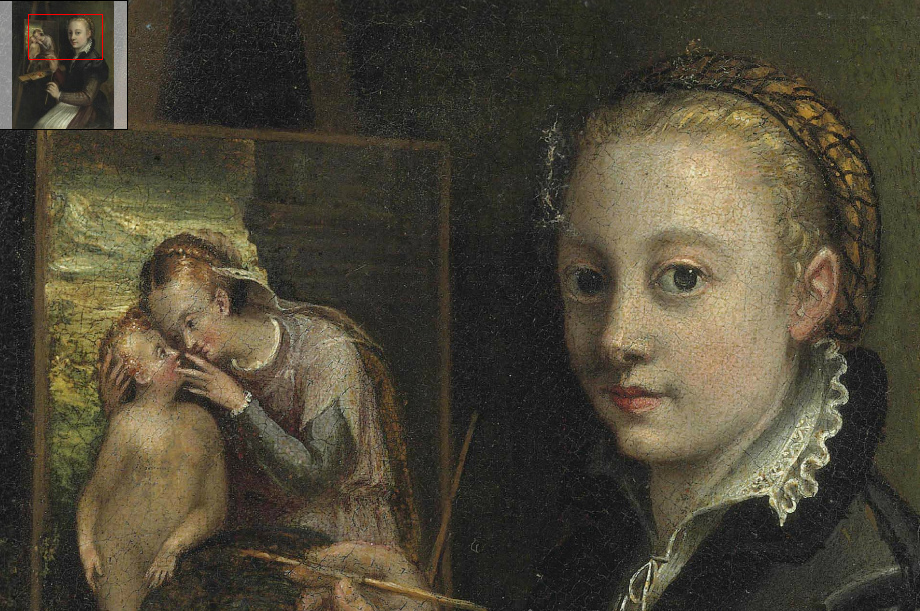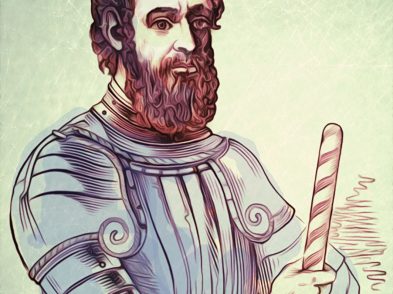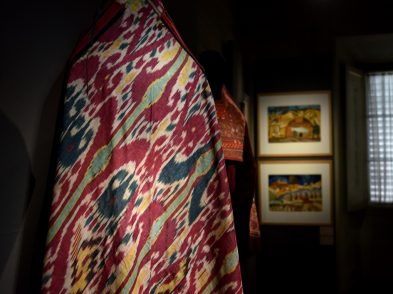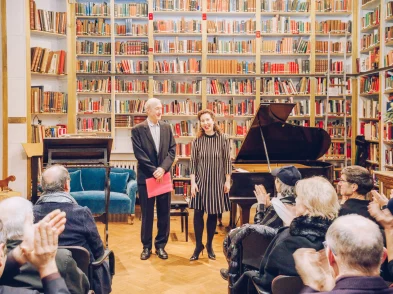When the father of Sofonisba Anguissola (1532-1625), an affluent nobleman from Genoa, sent Michelangelo her drawing entitled Laughing Girl, the Renaissance master openly admired her talent, challenging her to draw an emotional expression that was more difficult to depict: crying. Her Boy Pinched by a Crayfish, created in response to his friendly dare, shows a teary-eyed boy whining over his cut finger. He had injudiciously reached into a tray of crayfish held by a smiling girl! Michelangelo’s emissary was so genuinely impressed with Angvuissola’s drawing that he sent it, along with his illustration of Cleopatra, as a gift to Cosimo I de’Medici, then duke of Florence. A distinguished contemporary of Leonardo da Vinci and Titian, Anguissola and her groundbreaking works became models for established professional painters of both sexes, including Lavinia Fontana, Artemisia Gentileschi and Caravaggio. Caravaggio’s Boy bitten by a Lizard (Korda Collection, London) was likely inspired by her Boy Pinched by a Crayfish (National Museum of Capodimonte, Naples).

Self-portrait by Sofonisba Anguissolaait | Photo by Cea + on Flickr
Born in the cultured northern town of Cremona, Anguissola received an education that included Latin, humanities, music and painting. This type of advanced training was unusual for women in the Renaissance, especially for aristocrats. More commonly relegated to sitting rooms to perfect their domestic talents in manners, religion and needlework, young women were prepared for their own expected profession: matrimony. Anguissola eagerly taught three of her sisters, Lucia, Europa and Anna Maria, who all developed into painters of some note. Together with another sister, Elena, the precocious 11-year-old Sofonisba Anguissola began a three-year apprenticeship under the gifted Mannerist Bernardino Campi, followed by training with draftsman and fresco artist Bernardino Gatti.
In 1559, while Anguissola was in her late twenties, Phillip II, the unyielding Catholic sovereign who ruled during the height of Spanish power in Europe, appointed the artist to become his court painter in Madrid. While employed there, Anguissola served as a lady-in-waiting and art teacher to Queen Isabella of Valois, King Phillip II’s third wife. Once child-bride of England’s King Richard II, Isabella di Valois was the daughter of Henry II of France and Florence’s beloved Caterina de’Medici. During her 14-year post with Queen Isabella, Anguissola worked tirelessly. Her striking portrait of the royal Spanish consort is now in the Uffizi Gallery?s deposits.

Virtually the first woman to achieve international acclaim as a professional painter, Anguissola became widely known for her portraits and original scenes of ordinary domestic life. Vasari writes of Anguissola, ?But Sofonisba of Cremona, the daughter of Amilcare Anguissola, has worked with deeper study and greater grace than any woman of our times at problems of design, for not only has she learned to draw, paint, and copy from nature, and reproduce, most skillfully, works by other artists, she has on her own, painted some most rare and beautiful paintings.? Fifty works have been attributed to Anguissola, 30 of which are signed. The Uffizi Gallery?s Cassetto delle Miniature houses Anguissola?s Portrait of a Woman, an oil miniature on a walnut box. In the Sala Lombardi dei Cinquecento (room 34), visitors can view Portrait of an Unknown Man, attributed to Anguissola, which suggests that the artist used self-portraits to record her features during various stages of her life. One of Anguissola?s characteristically unornamented self-portraits (1550) is exhibited in the Vasari Corridor, while her oil on canvas Maiden with Flower remains in the Uffizi?s deposits.
When she was in her late 30s, the Spanish court selected Sicilian nobleman Don Fabrizio de Moncada as a fitting husband for the artist. The arranged marriage included a dowry stipulated by King Phillip II. Accompanying Don Fabrizio to Palermo, she continued painting and teaching, supported by a pension from the Spanish court. Love came into her life after her husband?s death, several years later. A year and a half after his passing, while sailing to Cremona, Anguissola fell in love with the ship?s captain, Orazio Lomellini, who, like her father, was a nobleman from Genoa. Some sources suggest that it was Anguissola who fashioned the marriage proposal, which Lomellini readily accepted.
The pair settled in Genoa, where Anguissola successfully established a school of painting. In 1620, Anguissola returned to Palermo, where she continued to paint, despite dimmed eyesight, possibly due to cataracts, and lived comfortably until her death in 1625. While in Sicily, she became a friendly tutor to a 24-year-old Flemish painter, Anthony Van Dyck. She was known to frequently advise the young artist regarding painting technique, which prompted him to remark that he had learned more from a sightless old woman than from all the master painters in Italy. His drawing of Anguissola in London?s British Museum is the last portrait for which she posed.
Sofonisba Anguissola was as unique as her name. Italy?s most legendary artists attested to Anguissola?s skill and Europe?s most powerful leaders clamored for the works it yielded. The sometimes-generous Fates granted a long and productive life to the woman whose paintings provide an extraordinary window onto one of history?s most genuinely admired artistic eras.








